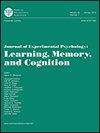A continuous aggregated accumulation model of recognition judgments.
IF 2.2
2区 心理学
Q2 PSYCHOLOGY
Journal of Experimental Psychology-Learning Memory and Cognition
Pub Date : 2024-09-12
DOI:10.1037/xlm0001379
引用次数: 0
Abstract
In recognition, remember-responses are understood to be based on recollection, and know-responses are understood to be based on familiarity. Two kinds of models have been proposed for the process by which recognition decisions are made. In single-process models, familiarity and recollection are integrated, and there is a single criterion for recognition. In dual-process models, familiarity and recollection are segregated, and there are separate criteria for remember and know-judgments. Recent process models can account for the distribution of remember and know-responses (under a range of different assumptions) but do not address the time course of the recognition process. Paradoxical findings, indicating that familiarity is available faster than recollection but remember-responses are on average faster than know-responses, cannot be convincingly explained by any existing dual-process model. We propose a new model that resolves this paradox by analyzing in detail the time course of recollection and familiarity. Know-responses based on the high familiarity of the test item are faster than remember-responses based on recollection. However, low-familiarity, low-recollection responses are slow and are also categorized by participants as know-responses. Hence, the average know-response time is slower than average remember-response time because know-responses include both fast high-familiarity responses and slow low-familiarity, low-recollection responses. A 12-parameter quantitative model that describes the relationship among the effects of confidence, accuracy, and remember and know categorization on accuracy and reaction time provided the best fit between expected reaction time and observed reaction time among the models tested. (PsycInfo Database Record (c) 2024 APA, all rights reserved).识别判断的连续聚合积累模型。
在识别过程中,"记得 "反应被理解为基于回忆,而 "知道 "反应被理解为基于熟悉。对于做出识别决定的过程,人们提出了两种模式。在单过程模型中,熟悉和回忆是结合在一起的,而且识别只有一个标准。在双过程模型中,熟悉和回忆是分开的,记忆和认识的判断标准是不同的。最新的过程模型可以解释记住和知道的反应的分布(在一系列不同的假设下),但没有解决识别过程的时间进程问题。现有的任何双过程模型都无法令人信服地解释这种自相矛盾的发现,即熟悉的速度快于回忆的速度,但记住的反应平均快于知道的反应。我们提出了一个新模型,通过详细分析回忆和熟悉的时间过程来解决这一悖论。基于对测试项目高度熟悉的 "知道 "反应比基于回忆的 "记住 "反应更快。然而,低熟悉度、低回忆度的反应速度较慢,参与者也将其归类为 "知道 "反应。因此,平均 "知道-反应 "时间比平均 "记住-反应 "时间慢,因为 "知道-反应 "既包括快速的高熟悉度反应,也包括慢速的低熟悉度、低回忆性反应。在所测试的模型中,有一个 12 参数的定量模型能最好地拟合预期反应时间和观察到的反应时间,该模型描述了信心、准确性、记住和知道分类对准确性和反应时间的影响之间的关系。(PsycInfo Database Record (c) 2024 APA, 版权所有)。
本文章由计算机程序翻译,如有差异,请以英文原文为准。
求助全文
约1分钟内获得全文
求助全文
来源期刊
CiteScore
4.30
自引率
3.80%
发文量
163
审稿时长
4-8 weeks
期刊介绍:
The Journal of Experimental Psychology: Learning, Memory, and Cognition publishes studies on perception, control of action, perceptual aspects of language processing, and related cognitive processes.

 求助内容:
求助内容: 应助结果提醒方式:
应助结果提醒方式:


